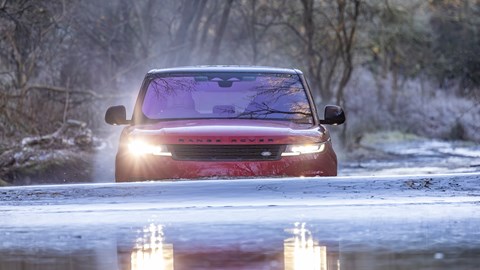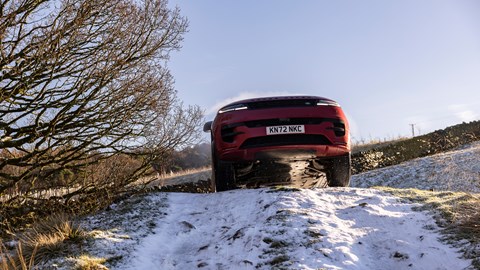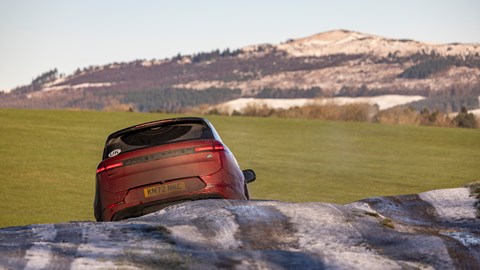► We take the Range Rover Sport off the open road
► Having faith is key
► Read month 1 here
‘If it’s slidin’, aim for summat soft.’ And with those reassuring words ringing in my ears, I point the Range Rover Sport down a steep and frozen muddy hillside and pray that I ticked the correct insurance boxes.
We’re at the Land Rover Experience centre in Skipton with instructor Adam Wilcock, trying to get a sense of just how good the Sport is at meeting the Land Rover brief. Can it do off-road to within 90 per cent of a Land Rover Defender and yet also be more of a delight than the full-fat Range Rover to drive down a back road?

The road bit comes later. First, we need to get down this hill without hitting anything, soft or not. It’s -5oC with ice everywhere, the sort of terrain where you can’t walk without doing a Charlie Chaplin impression.
And yet the Sport heads down the hill with unbelievable composure, thanks mainly to the All-Terrain Progress Control. Essentially this is cruise control for mud, where you can dial the speed back to less than walking pace (1.1mph in Low range), take your feet off the pedals and simply let the car do all the work via the ABS. Bearing in mind that we’re only on all-season Pirellis, not full-on winter rubber, it’s a remarkable demonstration of how easy the tech can make things.
Having faith is key. As it tips over the edge of a hill it’s very tempting to get on the brake to stop that initial lurch while the car works out what’s happening. The human driver knows because they can see, but the car has to react after the moment. But as soon as the systems work out what’s happening, they’re straight on it.

Post-slippery hill, we head for some metre-deep water. Sitting in a leather-lined car that’s badged Sport and with water sloshing above the sills feels odd. Adam even gets me to reverse back through the water, an affront to my mechanical sympathy, but again the car handles it with ease. Just be gentle with your inputs so you don’t upset the directional flow of water too much. And when you’re out of the other side, drop it into neutral and rev it hard to blow all the water out of the exhaust.
Having survived all that and not had to phone the insurance company, it would seem a good time to quit while we’re ahead and try out the road bit. As I said in my initial report, the comfort level is what grabs you immediately, with the Sport side of things not often revealed. Apart from anything else, this generation doesn’t look like a natural athlete. Think of it more as a cut-price Range Rover and you’ll be on the nose.
That said, it does occasionally reveal hidden depths that aren’t there in its big brother. Our drive up to Yorkshire should have provided more opportunities for it to reveal these, but sadly most of the tarmac was hidden beneath snow.
But the car has intrigue where I thought there was none. Persevere – that’s the key here. A Porsche Cayenne feels more alive and athletic from the get-go, but keep at it with the Range Rover to reveal hidden talents.

It’s the surprise that I enjoy. On a normal road, rolling it into a well-sighted corner – and all of a sudden, the car hooks up and you can really feel it rotate underneath you. It seems alive and dynamic.
It misses the Range Rover’s sense of occasion, but the Sport is the happier middle ground.
Logbook: Range Rover Sport (month 3)
Price: £83,620 (£90,845 as tested)
Performance: 2997cc turbodiesel six-cylinder, 296bhp, 6.6sec 0-62mph, 135mph
Efficiency: 36.9mpg (official), 31.3mpg (tested), 200g/km CO2
Fuel cost: 26.0p per mile
Miles this month: 744
Total miles: 17,592